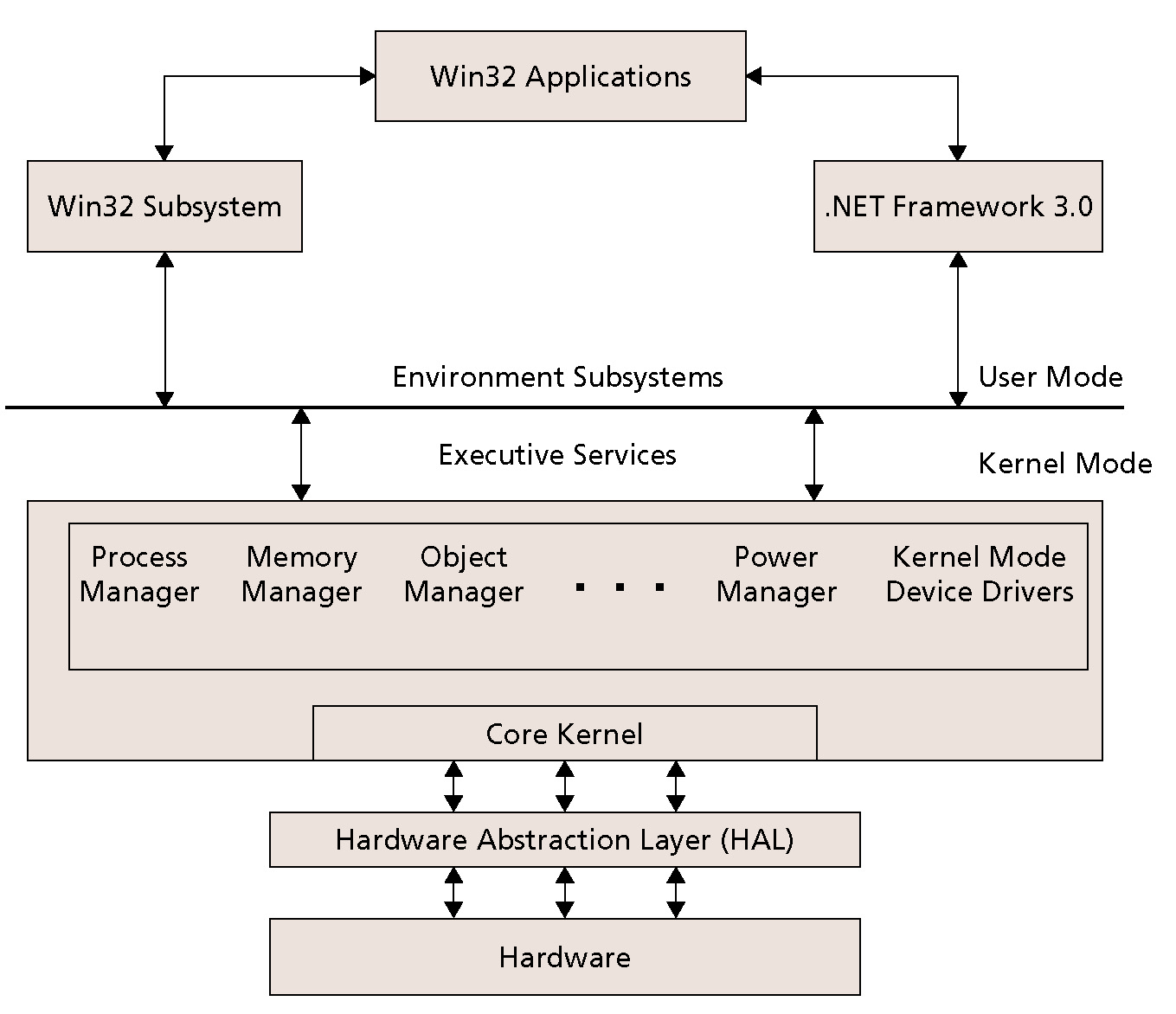Application Support
Application Architecture
- The application architecture of Windows 7 has evolved from the traditional Windows NT model.
- The Windows 7 operating system is designed to operate in a layered approach, where different layers provide targeted functionality. The conceptual layers add complexity, but they also allow a controlled and secure f ow when processing actions requested by multiple running applications.
- The following Windows 7 key components are:
- Environment subsystems
- Executive Services
Environment subsystems support applications and provide indirect access to Executive Ser- vices in the Windows 7 operating system kernel. An application's view of the operating system is restricted to those methods and services exposed by the different environment subsystems.
The environment subsystems and the applications run in user mode, which restricts access to memory and hardware. User mode applications and systems are assigned a specif c virtual memory space to run their code and store data. Attempts to access other memory spaces are not allowed. Direct access to hardware devices is completely blocked in user mode.
Executive Services provide the core operating system functionality that supports executing applications. Executive Services are made up of multiple modules, such as the core kernel, object manager, memory manager, and several others. Executive Services interact with each other and the computer hardware directly. Many of the services are designed to be aware of the type of computer hardware they are running on because they need to know how to work with the type of processor, memory, and disks technology present. Much of the hardware-specific knowledge is contained in the Hardware Abstraction Layer (HAL) service, which is specifically installed during installation of the operating system. Because the Executive Services are critical to the operation of the computer, applications are not allowed to communicate directly with it. That is the purpose of the environment subsystems.
The Executive Services operate in kernel mode, which allows these services full access to memory and hardware devices. This allows the kernel to conf gure and control hardware devices starting from the initial boot process on startup of the computer.
